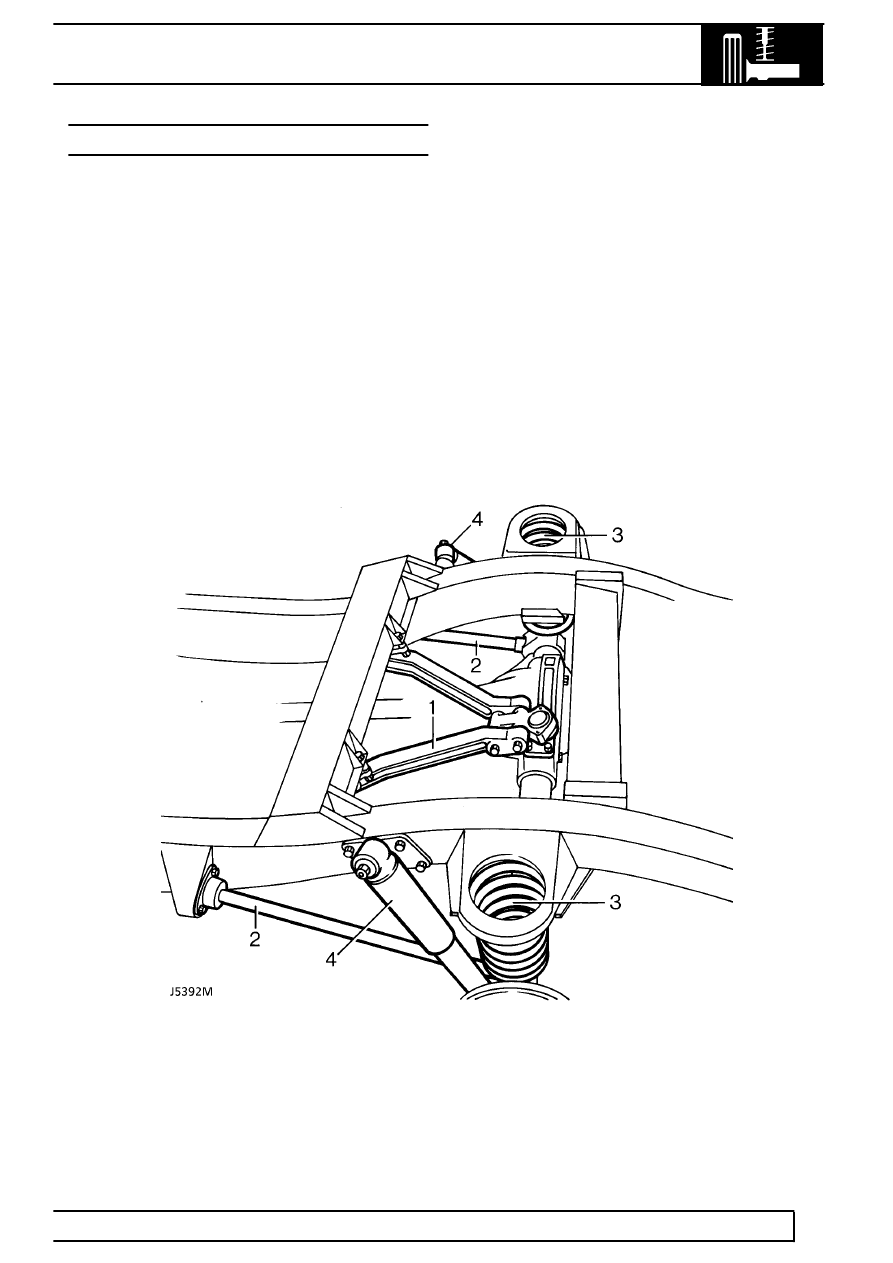300Tdi Defender Rear Suspension Description

REAR SUSPENSION
1
DESCRIPTION AND OPERATION
DESCRIPTION
The rear suspension design locates the rear axle with
two round section steel lower link arms and a forged
’A’ frame, upper link assembly. This system allows
maximum axle articulation and wheel travel while
maintaining roll stiffness and directional stability.
The link arm is secured by a single retaining nut to the
chassis mounting, comprising a rubber bushed
bracket, which is retained by three fixings. A ferrule
rubber bush with a single retaining bolt is used to
secure the link arm to its axle mounting.
The upper link assembly is located on the rear
differential housing by a pivot ball-pin assembly. Two
brackets bolted to the chassis crossmember support
both sides of the ’A’ frame of the link assembly,
secured by single retaining bolts.
A Boge Hydromat self levelling unit can be fitted, as
an option, on 110/130 models to give additional
support when the vehicle is used to carry heavier
loads.
Two rubber bearing bushes, with retaining straps,
secure the rear of the anti-roll bar, if fitted, to the
chassis mountings, while bushed links support the
front of the anti-roll bar to the axle.
Conventional long travel coil springs and hydraulic
shock absorbers are used to control body movement.
The shock absorbers are secured to chassis mounting
brackets and fabricated lower mountings welded to to
the rear axle. Retaining plates are used to secure the
coil springs to the axle mounting while fabricated
brackets, welded to the chassis, are used for the
upper spring location.
Rear axle suspension
1. ’A’ frame, upper link assembly
2. Lower link
3. Coil springs
4. Shock absorber
